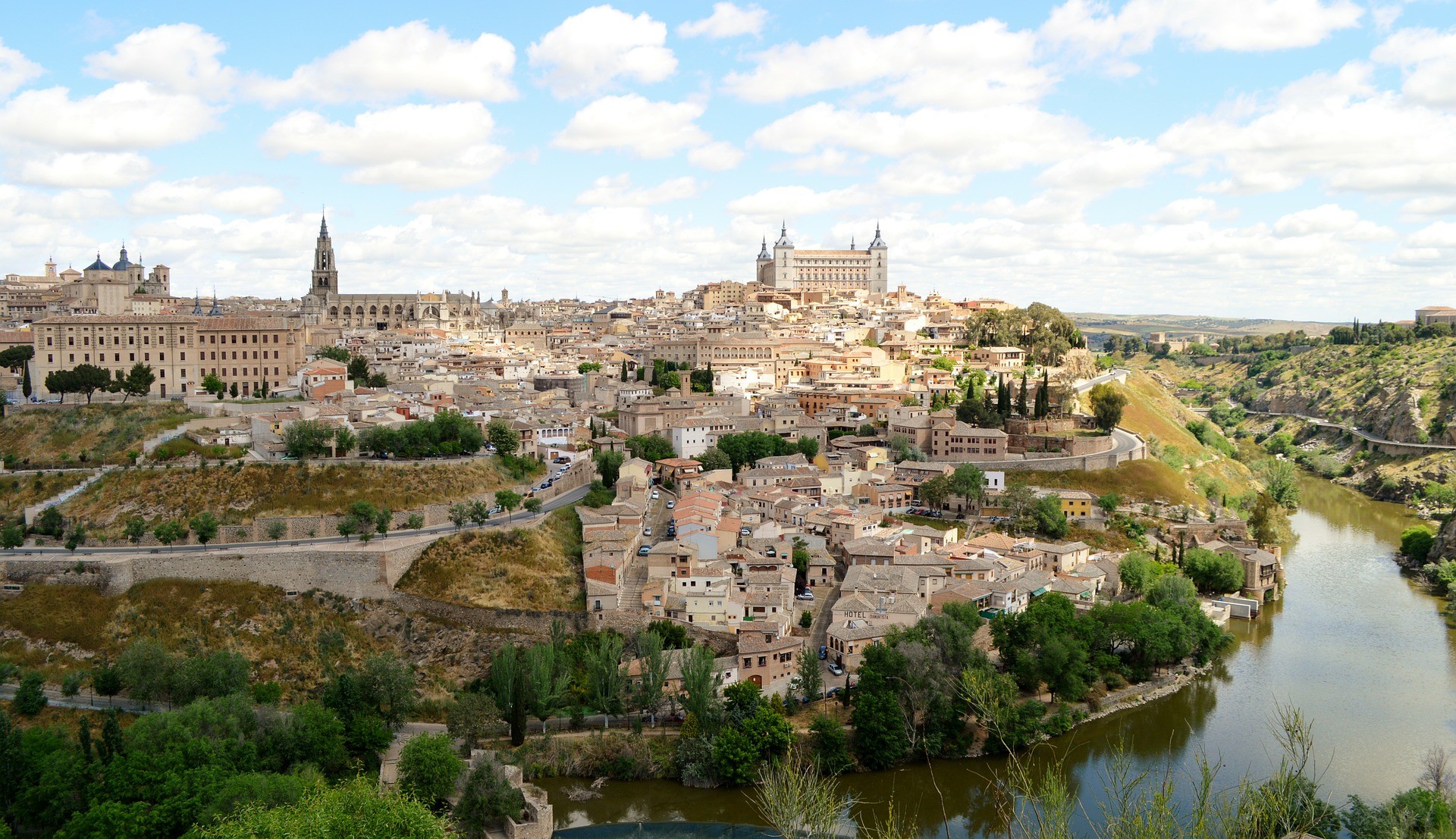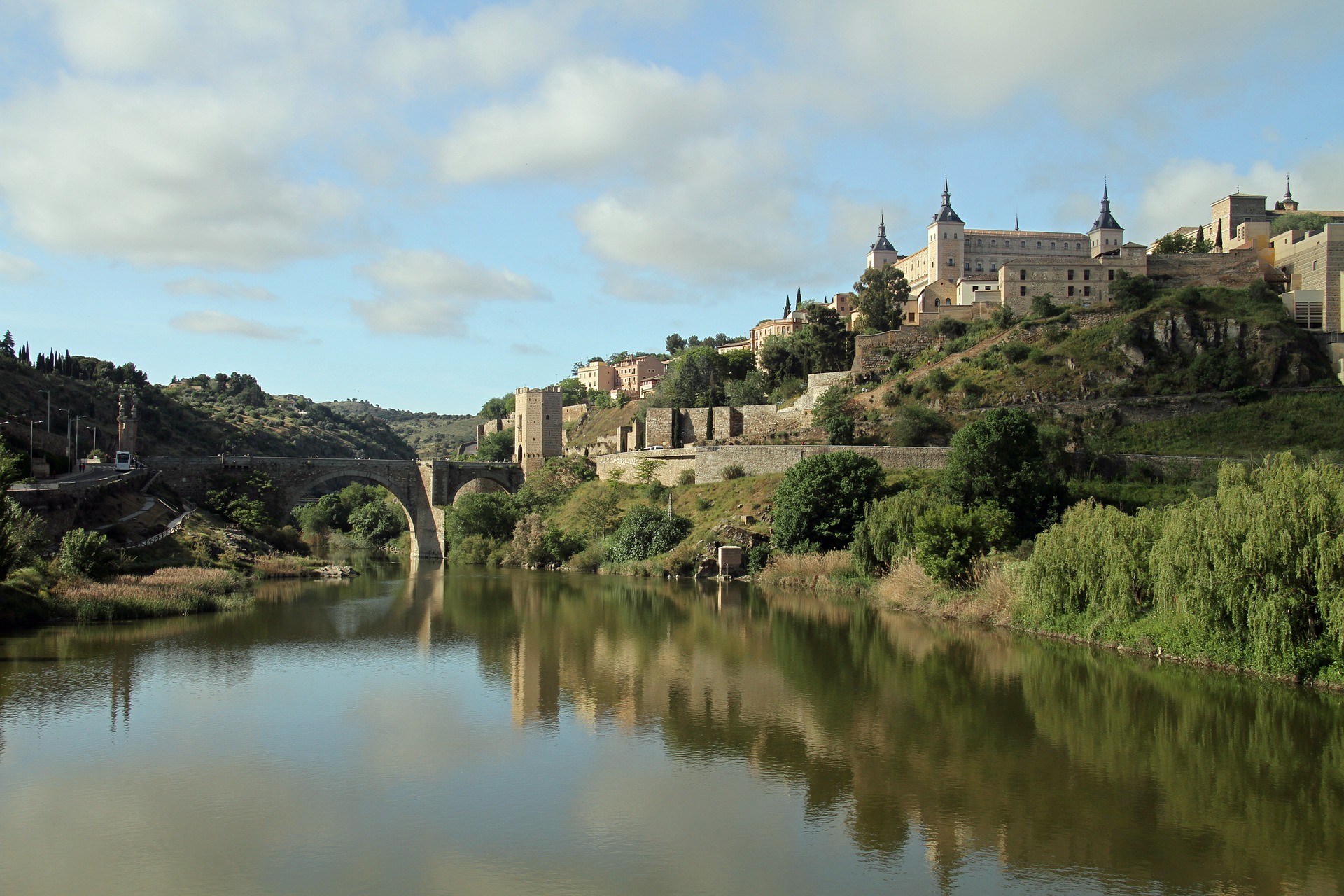Toledo, the city of three cultures
The city of Toledo, in its entirety, is considered to be a UNESCO World Heritage Site. It's very close to Madrid so if you're from Madrid or are just in the capital for your Erasmus year, don't think twice about getting a bus here and visiting!
Toledo is a historically incredible city, in which "the three cultures" live together: Arabs, Jews and Christians. This is felt in its culture, in the construction of its buildings, the works of arts, the religious buildings and in its food.
They tend to say that Toledo has a spell that is casts over you, and makes you want to come back once or twice again to discover something new.

You can get into Toledo through various doorways in the old town wall. We went in through the Puerta de la Bisagra (the Muslim door) and we started our trip in the Plaza de Zocodover, sweeping from the north to the south of city so we didn't miss anything. In any case, whatever way you choose will be fine for admiring its houses, walls, plazas and its varied architecture, as well as the shops and local businesses. Above all, the bakeries and workshops where they make and sell the legendary marzipan of Toledo. The best thing to do, as I always say, is after having seen the most important things, is to forget the map, get lost and enjoy the city's charm.
My list of the essential sites that you can't leave without seeing has:
First of all, the Cathedral of Santa María of Toledo, best known as the Catedral Primada de Toledo. It's Gothic, beautiful and enormous. It's the biggest in Spain just behind Seville, which is in first place. You have to pay to visit, but it's worth paying for because it's truly astonishing inside. I didn't want to leave. The visit includes a climb to the bell tower with its respective impressive views.
Secondly, is the Alcázar of Toledo, which is iconic. It's a military fort situated on a hill, but inside it's home to the Army Museum and Castle Library - La Mancha. I think I remember this visit being free but it didn't interest us much.
From the hill you can see the pretty views of the magnificent Tajo river.
Next to the Cathedral, in the same plaza, we can look at the Town Hall and the Arzobispal Palace. The atmosphere in this plaza enchanted us, with a street guitarist playing and singing and people danced around him. In general, Toledo is a very animated city.
If there's anyone that always identifies themselves with Toledo, it's without a doubt the very famous artist El Greco. Born in Crete and brought up in Italy, he arrived to Toledo in the middle of the 16th century. The majority of his magnificent paintings are in this city, with another small collection of them in Madrid.
One of his most celebrated works - I'm sure that you've studied it in a history class - is the El Entierro del Conde de Orgaz which you can visit in the Santo Tomé Church, on the right of the entrance. The painting is enormous, it's worth paying to go inside the Church (although it's not that impressive) to be able to look at this masterpiece peacefully. I think it costed €3.
The presence of the Jewish and Arabic culture in Toledo is one of its most interesting characteristics. The Judería is a neighbourhood that you'll find right next to the Santo Tomé Church.

In its streets, where they are still conserving the charm of the medieval era, we can find the El Greco Museum (spectacular, worth paying as well) and in front of it, is the Synagogue of El Transito, which is quite bare on the outside but luxurious inside. It's worth a visit, which additionally is free. This goes for the other synagogue in the city too, Santa María la Blanca.
Finally, that would leave us with see the San Juan de los Reyes Monastery, that we left till last. It's considered to be the most important building constructed by the Catholic Monarchs of Spain. It was where they were first buried, although they are now in the Royal Chapel of Granada. Inside it's beautiful, especially the cloisters.
There are two really cool viewpoints that are worth mentioning. The frist, from the tower of the San Ildefonso Church, which belongs to the Jesuits, from the Society of Jesus. From here you'll be able to see the whole of the old town of Toledo and you have the best views of the Alcázar. This you have to pay for.
And the second is the Valle Viewpoint, which you get to by leaving the city and crossing the river. From there, you'll have the best views of the river Tajo and the city in every dimension.

Take note: when it comes to souvenirs, pass through the Santo Tomé Patisserie, where they make the best marzipan in the world. If you're going to stay and eat in Toledo, you can have tapas in a bar in the centre. If you choose this option, you have to walk by 3 of its legendary restaurants: Bar Ludeña which offers its classic loin stew with tomatoes and beans as tapas, called "las carcamusas" (exquisite, we wiped the plate clean and ordered it all over again! ). We also decided to try the potato tortilla which they had at the bar and it was really tasty.
Another essential local (the second one we went to) is the Cervecería El Trébol. We tried its traditional "bomba", a roasted potato filled with meat and covered in fried tomato and alioli. But, we liked the "pulga" the most (which is like a mini sandwich). We have the grilled deer with a mushroom sauce.
Just a few steps away from the Cervecería El Trébol, is La Tabernita, with a menu based on traditional products and game from the region of La Mancha. Try their potatoes "revolconas con torreznos", they're to die for.
Photo gallery
Content available in other languages
Share your Erasmus Experience in Toledo!
If you know Toledo as native, traveler or as exchange student... share your opinion on Toledo! Rate different characteristics and share your experience.
Add experience →


















Comments (0 comments)